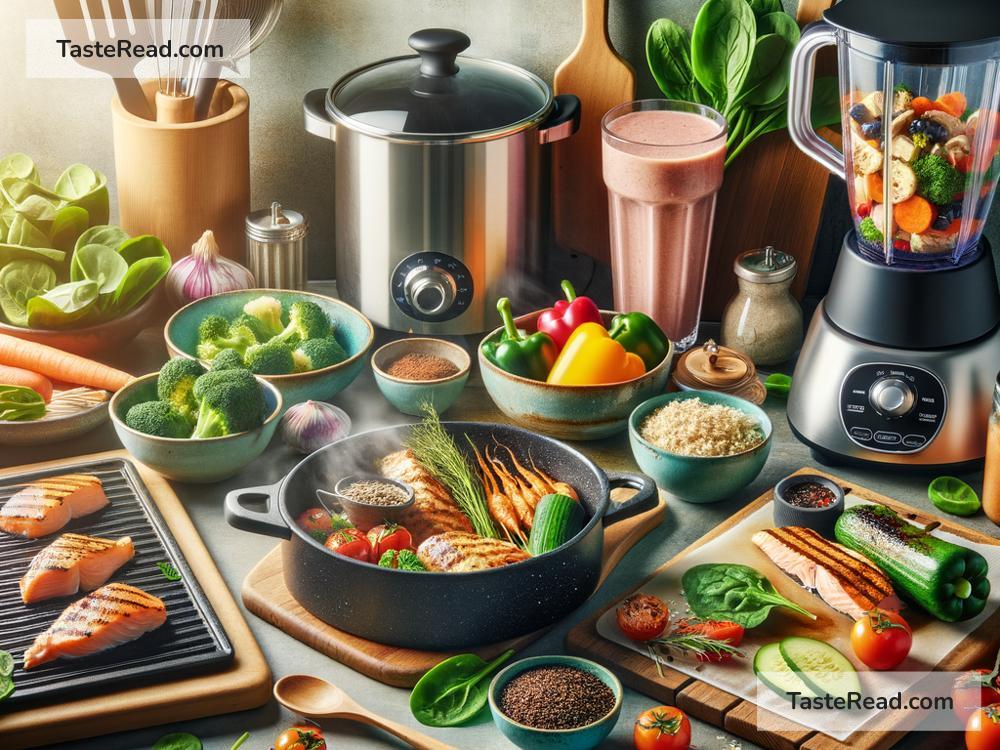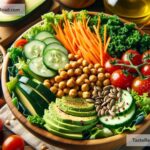How to Choose the Right Cooking Method for Nutrient Retention
Cooking is more than just preparing food—it’s a science. The way we cook affects not only the taste and texture of meals but also the nutrients in them. To maintain a healthy diet, it’s important to choose cooking methods that preserve nutrients in food while still making them safe to eat and enjoyable. In this article, we’ll explore how different cooking techniques impact nutrient retention and provide tips on choosing the best methods for your meals.
Why Nutrient Retention Matters
Nutrients like vitamins, minerals, and antioxidants are essential for our health. Unfortunately, not all cooking methods treat these nutrients kindly. Exposure to heat, water, or air can cause nutrient loss, breaking down vitamins or leaching minerals out of the food. For example:
– Vitamin C (in fruits and vegetables) is sensitive to heat and air.
– B vitamins (found in grains and meats) dissolve in water.
– Some antioxidants are destroyed by high temperatures.
By choosing cooking methods wisely, you can minimize nutrient loss and enjoy meals that are both delicious and nutritious.
Common Cooking Methods and Their Effects on Nutrients
Let’s look closely at some popular cooking methods and how they affect nutrient retention:
1. Boiling
Boiling involves cooking food in a pot of water. While it’s a quick and easy method, it causes water-soluble nutrients like Vitamin C and B vitamins to leach into the water. If you’re cooking vegetables for a long time in boiling water, much of their nutritional value may end up down the drain when you discard the liquid.
Best Practices:
– Use minimal water when boiling.
– Save the cooking water to make soups or sauces to preserve lost nutrients.
– Avoid overcooking—veggies are best when slightly firm and vibrant.
2. Steaming
Steaming uses hot vapor instead of water to cook food and is one of the most nutrient-friendly methods. Since food doesn’t soak in water, steamed vegetables retain most of their vitamins and minerals. Steaming also keeps the natural colors, flavors, and textures intact.
Best Practices:
– Invest in a steamer or use a pot with a steaming insert.
– Avoid oversteaming—check the texture periodically to ensure vegetables don’t turn mushy.
– Add herbs or spices after steaming for extra flavor.
3. Sautéing
Sautéing involves cooking food quickly in a small amount of oil at medium to high heat. This method works well for retaining nutrients since it uses less heat than frying and doesn’t require water. However, using too much oil or cooking for too long can degrade fat-soluble vitamins like Vitamin E.
Best Practices:
– Use a healthy oil like olive oil or avocado oil.
– Keep the cooking time short to avoid excessive nutrient loss.
– Add fresh herbs and spices toward the end to enhance flavor without overcooking.
4. Grilling or Roasting
Grilling and roasting involve cooking food at high temperatures using direct or dry heat. While these methods are great for enhancing flavor, the high heat can destroy delicate nutrients like Vitamin C and some antioxidants. However, grilling meat and seafood helps retain key minerals like iron and zinc.
Best Practices:
– Avoid overcooking or charring food to prevent nutrient loss and the formation of harmful compounds.
– Use marinades made with lemon juice or vinegar, which can help preserve certain antioxidants.
– Pair roasted meats or vegetables with nutrient-rich sides like fresh salads to balance out the meal.
5. Microwaving
Microwaving is often misunderstood, but it’s actually one of the best methods for nutrient retention. Because microwaves cook food quickly and require very little water, vitamins and minerals stay intact. It’s an excellent option for steaming vegetables or reheating leftovers.
Best Practices:
– Use microwave-safe containers and cover food to cook evenly.
– Add minimal water when microwaving vegetables.
– Avoid overcooking or overheating, as this can dry out food.
6. Raw and No-Cook Options
Eating raw fruits and vegetables is the ultimate way to preserve nutrients. Since there’s no heat or water involved, vitamins, minerals, and enzymes remain whole. However, not all foods taste good raw or are safe to eat without cooking (e.g., potatoes and meat).
Best Practices:
– Choose raw preparation for vegetables like cucumbers, carrots, bell peppers, and leafy greens.
– Pair raw salads with protein for a balanced meal.
– Pre-wash and prep your raw ingredients to make them more enjoyable.
Tips for Choosing the Right Cooking Method
Here are some handy tips to help you decide how to cook foods while retaining their nutrients:
- Consider the Food Type:
- Steaming is ideal for delicate vegetables like broccoli.
-
Grilling or roasting works well for hearty foods like meats and root vegetables.
-
Balance Time and Temperature:
-
Shorter cooking times and lower temperatures help preserve nutrients. Avoid extreme heat unless absolutely necessary.
-
Use Small Amounts of Water and Oil:
-
Minimizing water and oil reduces nutrient loss. If you do use water, try incorporating it into soups or sauces.
-
Keep the Skin On:
-
The skins of fruits and vegetables often contain fiber and nutrients. Cook potatoes, carrots, or apples with their skin intact when possible.
-
Mix Cooking Methods:
- Combining raw and cooked foods can ensure a variety of flavors and nutrients. For example, serve a raw spinach salad alongside roasted chicken.
Final Thoughts
The way you cook food plays a big role in how healthy your meals are. By choosing methods like steaming, microwaving, or sautéing over boiling and frying, you can enjoy flavorful dishes that pack a nutritional punch. Remember, balance is key—no single method suits every food or recipe. Experiment with different techniques and find what works best for your lifestyle. Whether you’re steaming veggies, grilling meat, or eating a crisp salad raw, you’ll be on your way to retaining nutrients and savoring delicious meals.


